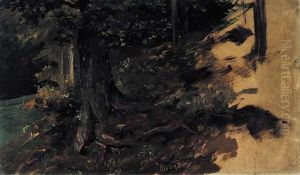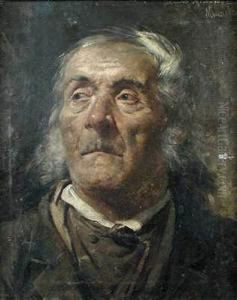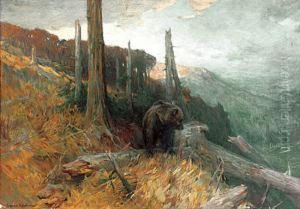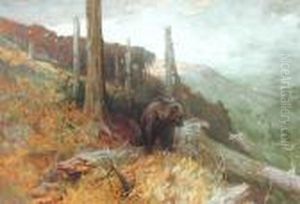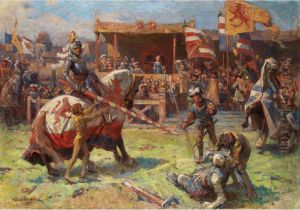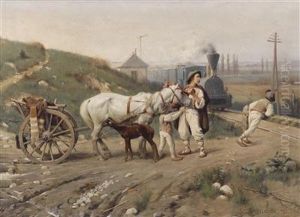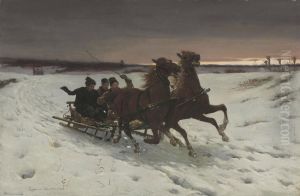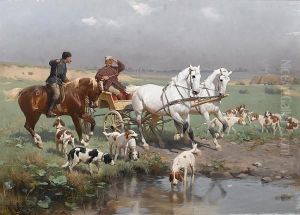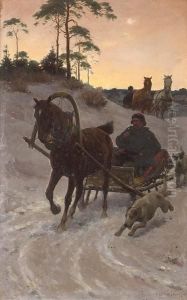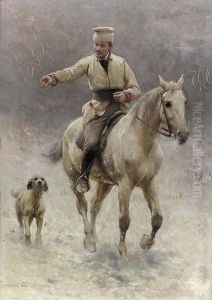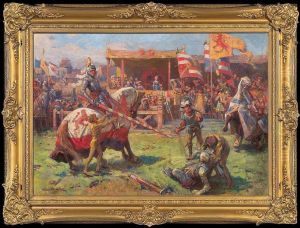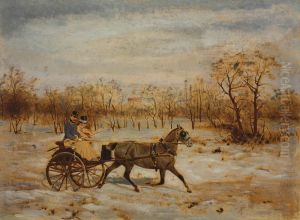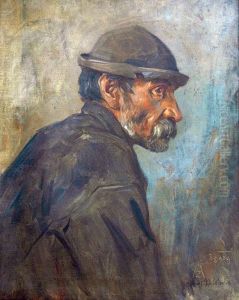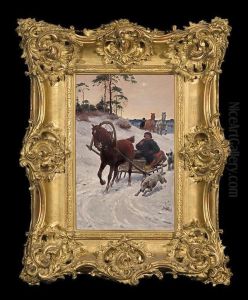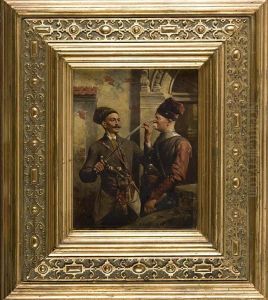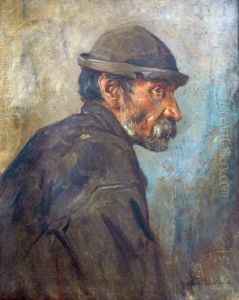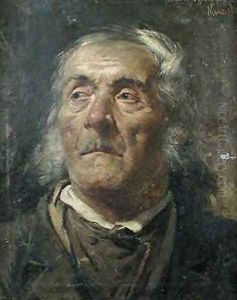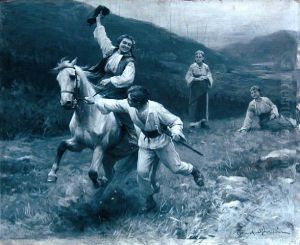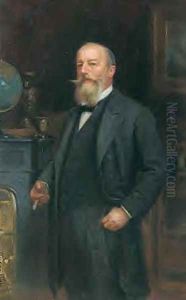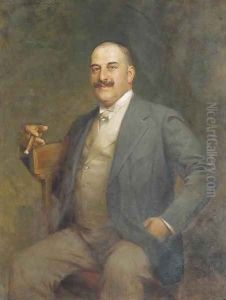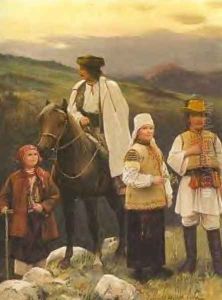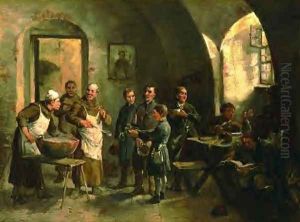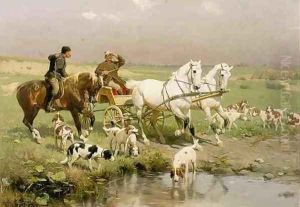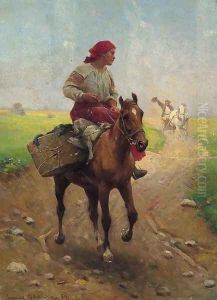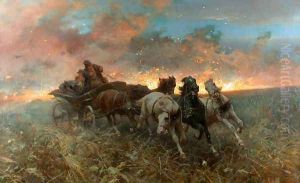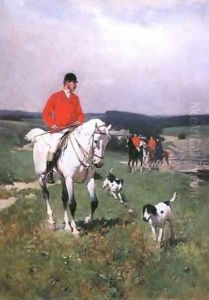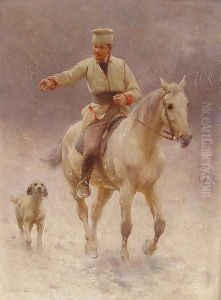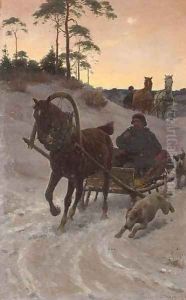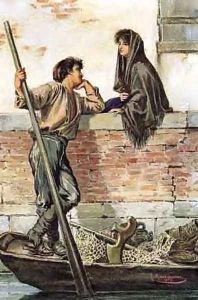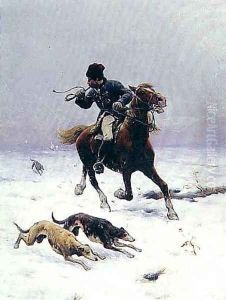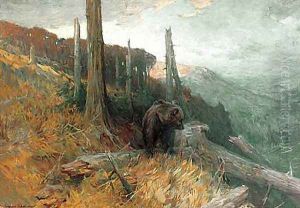Sigismund Ajdukiewicz Paintings
Sigismund Ajdukiewicz was a Polish portrait and genre painter, born on December 21, 1861, in Witkowice, now part of Ukraine. He was part of a well-known family of artists; his brother, Tadeusz Ajdukiewicz, was also a notable painter. Sigismund showed an early aptitude for art and studied painting at the Academy of Fine Arts in Vienna, Austria, which was a prominent center for art and culture during his time.
After his studies, Ajdukiewicz traveled extensively, which influenced his style and subject matter. He visited places like the Balkans, the Middle East, and North Africa, capturing the local people and their customs in his paintings. Ajdukiewicz was particularly interested in military subjects and became well-known for his depictions of soldiers and horses, a theme that was popular among patrons in the Austro-Hungarian Empire.
He lived and worked in various European cities, including Vienna, Krakow, and Lwów (now Lviv in Ukraine). Throughout his career, Ajdukiewicz participated in numerous exhibitions and received accolades for his work. His paintings were characterized by their detailed realism, vibrant color palette, and dynamic composition.
Ajdukiewicz's works can be found in several museums and private collections in Poland and abroad. He continued to paint and exhibit his work until his death on January 29, 1917, in Krakow, Poland. His legacy is preserved through his contributions to 19th-century European art, particularly in the genre of portrait and military painting.
